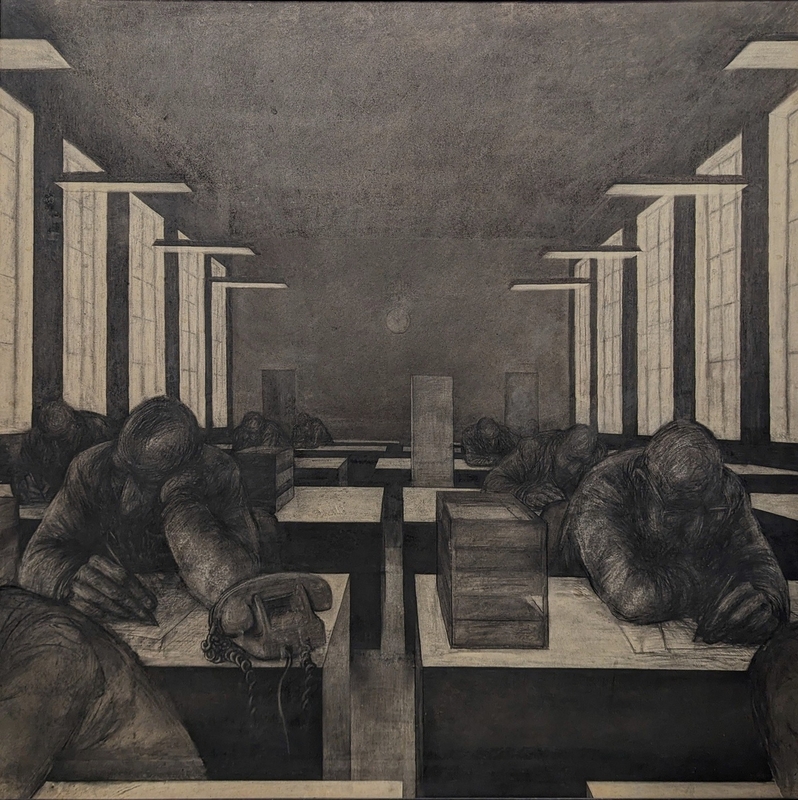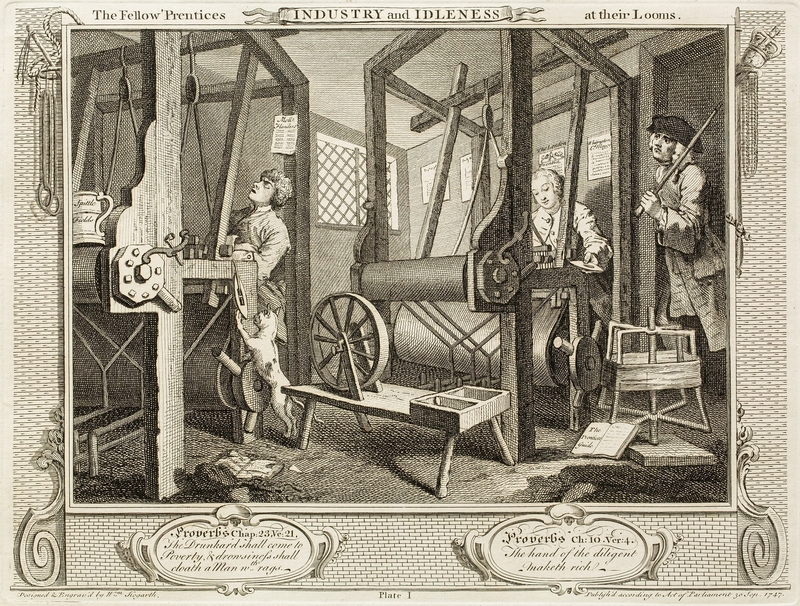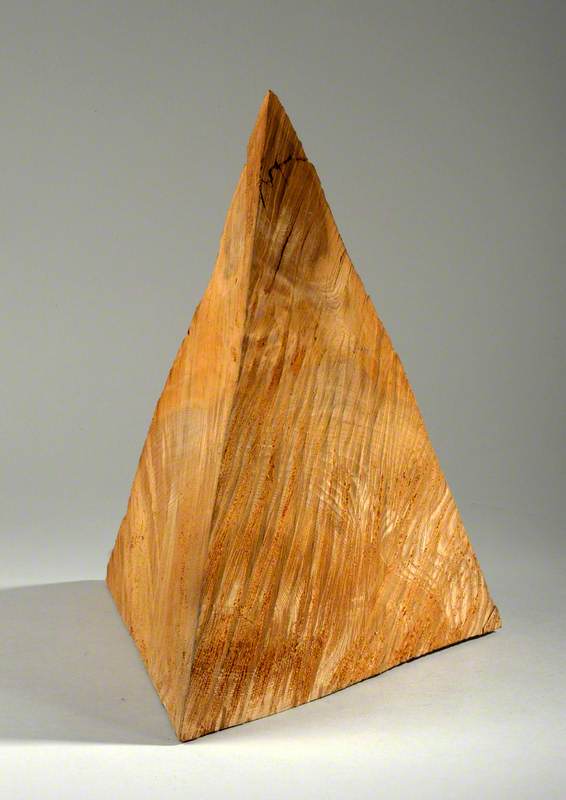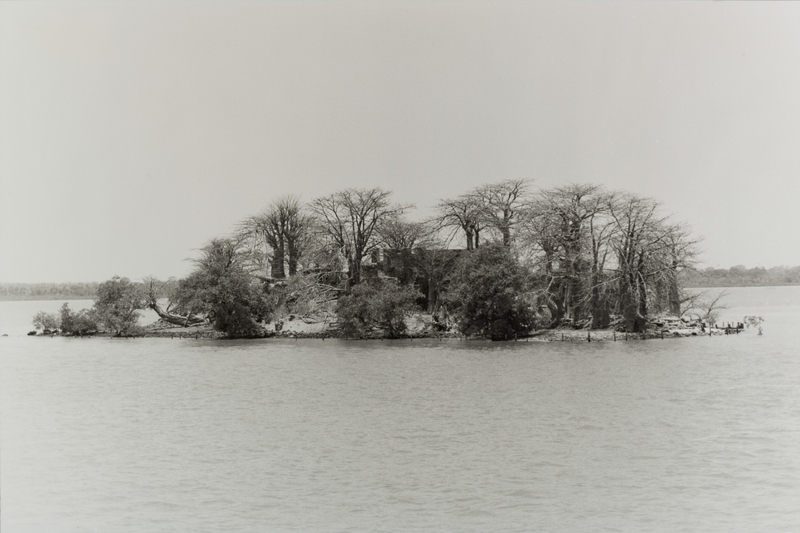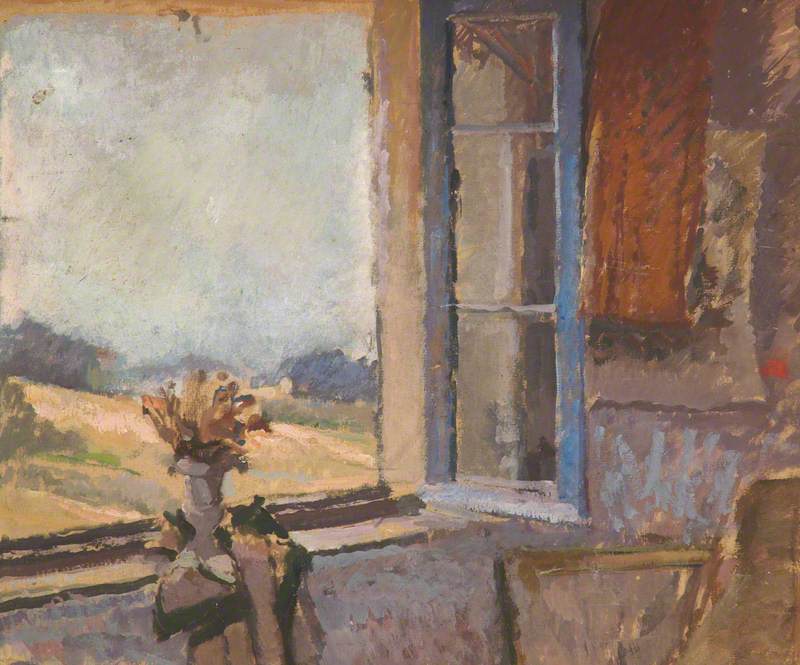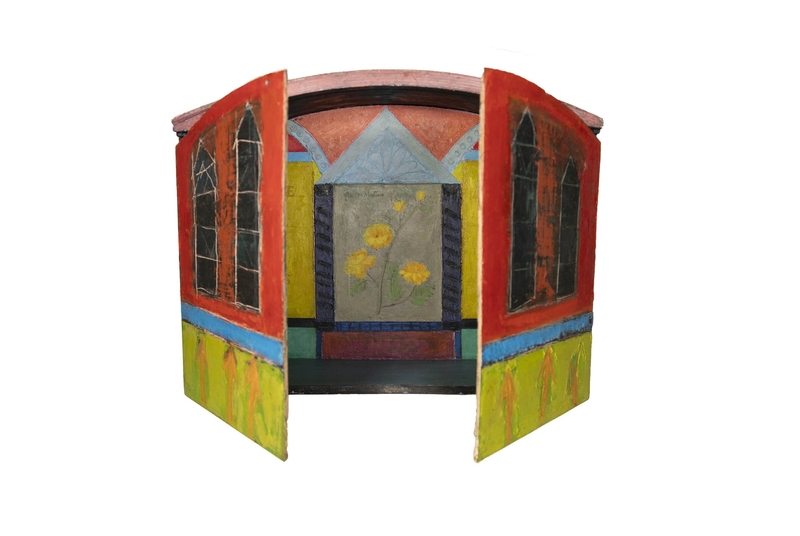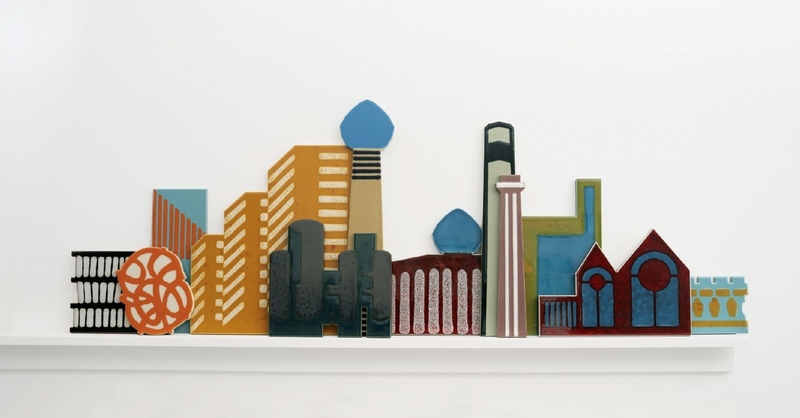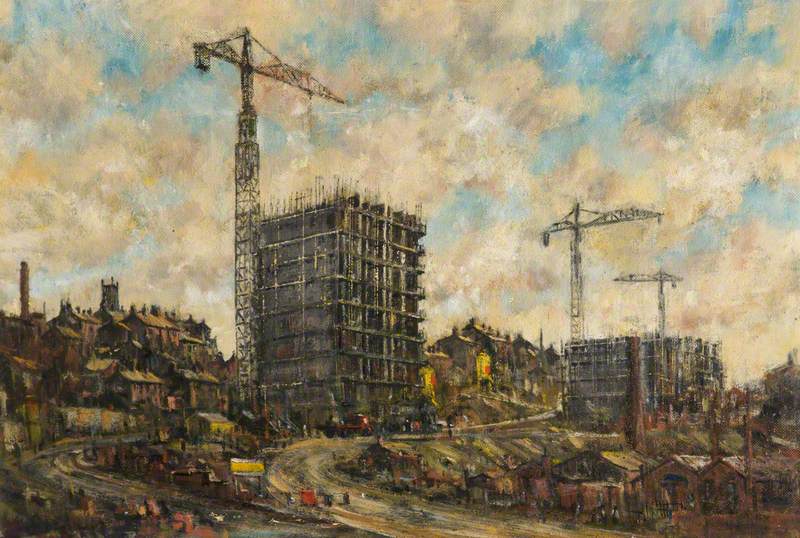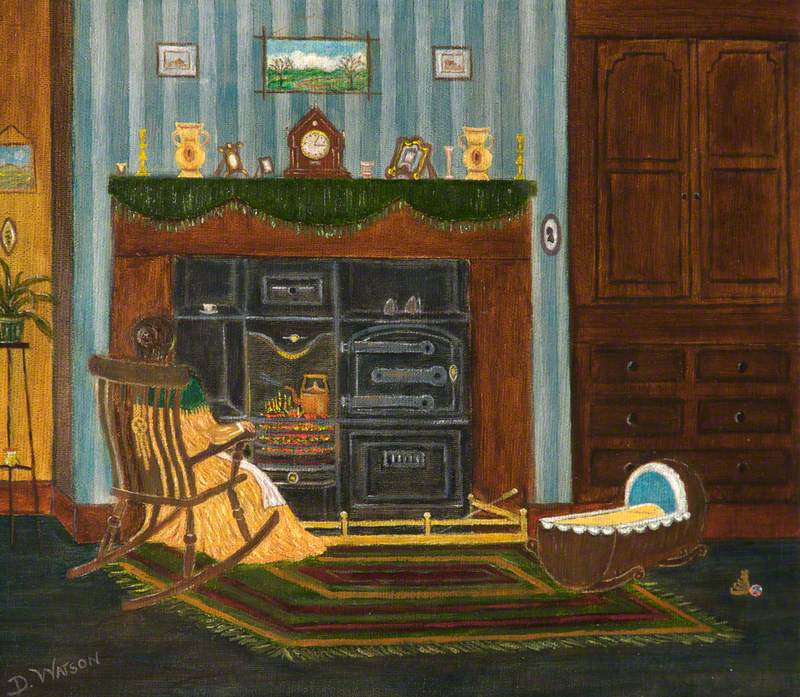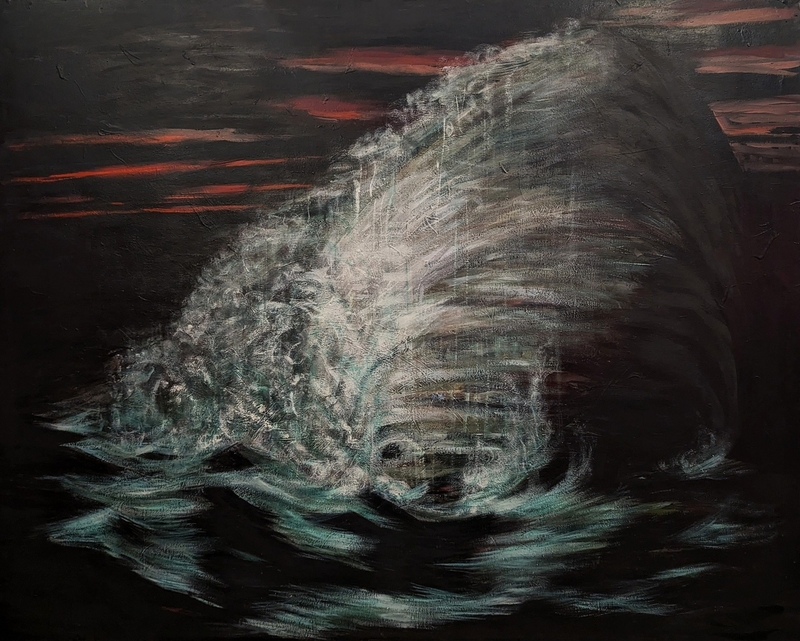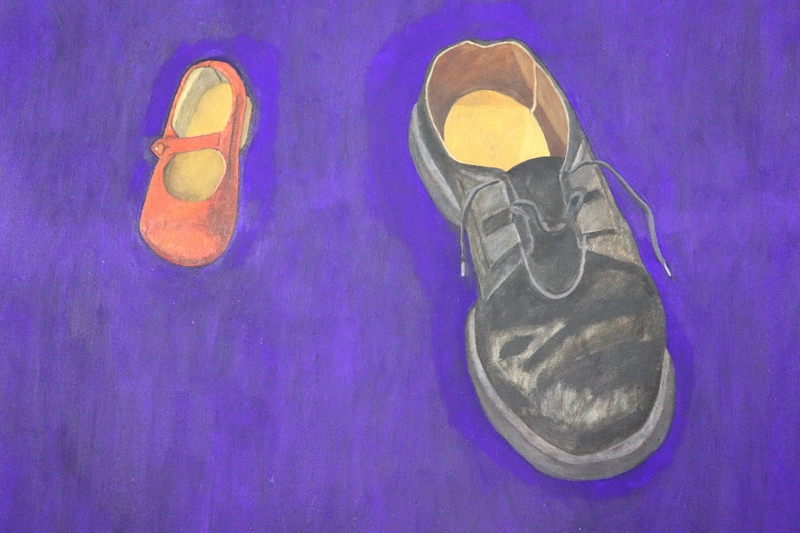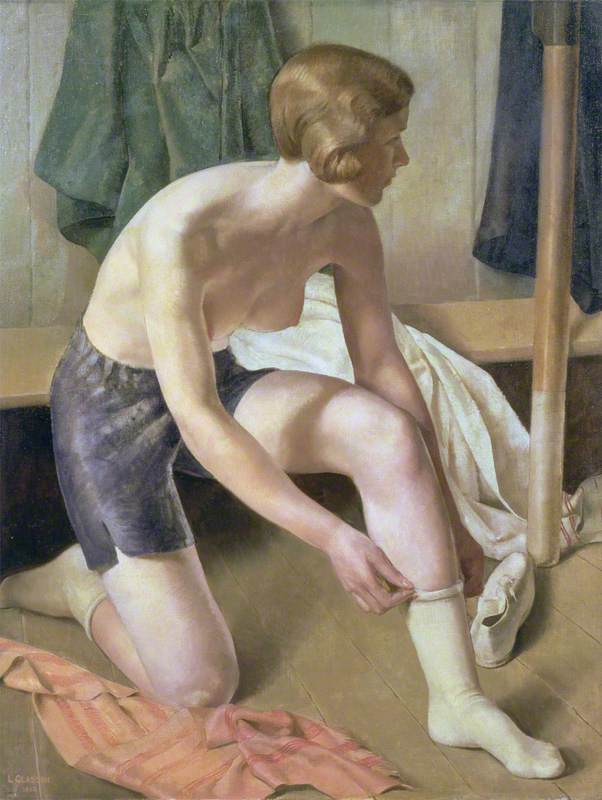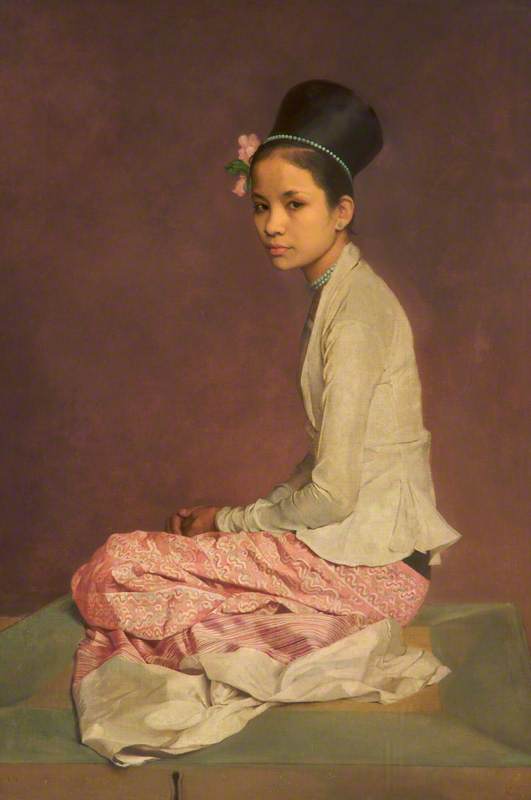'A Tall Order! Rochdale Art Gallery in the 1980s' was a research-led exhibition, staged in 2023 at Touchstones Rochdale.
During the 1980s, Rochdale Art Gallery was led by exhibitions officer Jill Morgan who, with a team of women curators, prioritised exhibitions of socially engaged and politically conscious art and artists.
'A Tall Order!' comprised historic works from the 18th to early 20th century, mainly drawn from Rochdale's permanent collection; works made and exhibited at Rochdale Art Gallery during the 1980s and early 1990s; and contemporary art by artists currently engaging with the legacies of the 1980s. Works were placed in each of the four thematically arranged galleries at Touchstones to generate cross-generational conversations.
-
'Our policy is to encourage new audiences for art, particularly women, Black communities, young people, those with disabilities, and to encourage cultural activity for working class communities. Broadly, to change the domination of art by a white middle class male audience and producer. A tall order!'
Jill Morgan, Exhibitions Officer, Rochdale Art Gallery, March 1987
'Rochdale Art Gallery exhibition posters, c.1982-1993', 2022, digital wallpaper of archival posters by Alison Skinner
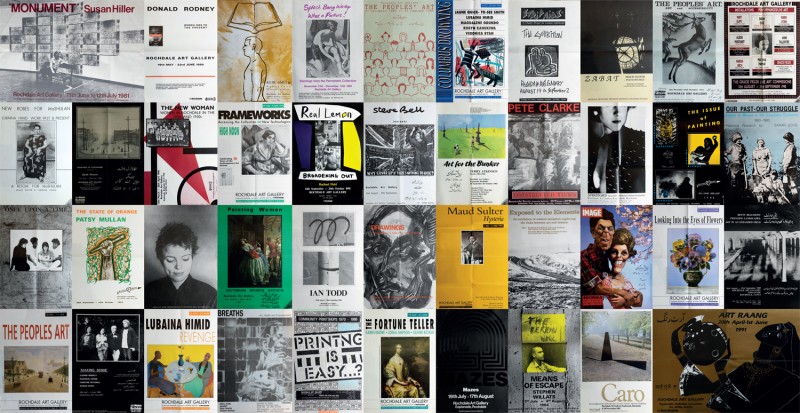 © the artist. Image credit: Touchstones Rochdale
© the artist. Image credit: Touchstones Rochdale
-
Gallery One: Work and Labour
During the 1980s Rochdale Art Gallery staged exhibitions that engaged with the histories of working-class labour, women's relationship with work in and out of the home, and the consequences of unregulated capitalism. Under the Conservative government led by Margaret Thatcher, most of Britain's nationalised industries were privatised, and many people profited. But while the financial industries thrived, heavy industry was in decline. Rochdale Art Gallery exhibited artworks and hosted live performances that addressed Britain's declining industries, particularly local textile manufacturing. Artists were concerned with how working-class histories, and particularly those of working women, were recorded.
-
Office 1977
Throughout his career, Paul Butler has been concerned with expressing the lived experiences of ordinary people. In Office he conveys a sense of oppression experienced by many people who undertake repetitive work in open plan offices. Butler's solo exhibition was staged at Rochdale Art Gallery in 1981 and included drawings made between 1977 and 1981. Butler explained that, 'I wanted to do work that was about the experience of doing a "job" … I try to realise a figure simultaneously as an individual in a particular situation and, as a metaphor which refers to the "human predicament".'
Paul Butler (b.1947)
Carbon pencil & charcoal
H 120 x W 120 cm
Rochdale Arts & Heritage Service
-
One Room Living 1985
Lois Williams was included in several important feminist exhibitions at Rochdale Art Gallery during the 1980s: 'Pandora’s Box' (1984), 'Off the Shelf' (1986), and 'Along the Lines of Resistance' (1989). The support given to Williams over an extended period of time demonstrates the commitment shown to artists by Rochdale Art Gallery. One Room Living was included in 'Along the Lines of Resistance' and Williams wrote, 'Although the title implies isolation and life in a confined space, it also suggests independence, self-sufficiency and freedom'.
Lois Williams (b.1953)
Sacking, felt, wadding & mixed media
Arts Council Collection, Southbank Centre
-
Que sera sera
Sutapa Biswas exhibited Que Sera Sera in the exhibition 'The Issue of Painting', staged at Rochdale Art Gallery in 1986. The exhibition proposed that although other artistic mediums such as performance or video work had grown in popularity amongst artists, painting remained an important mode of expression for feminist artists. In this work, Biswas presents a child looking up at her mother, who is dressed in a sari; her depiction of an ordinary South Asian family standing in front of a fridge was ground-breaking. Here Biswas highlights the valuable work mothers undertake in raising socially aware children.
Sutapa Biswas (b.1962)
Mixed media on paper
H 148 x W 96 cm
Bradford Museums and Galleries
-
Old Man Being Interviewed, DHSS Office, Birmingham, 1984 1985
Capturing the condition of poverty in Margaret Thatcher's Britain, Paul Graham's series 'Beyond Caring' represents a critical moment in the development of British documentary photography. This work depicts a scene in a DHSS Office in Birmingham and provides an immediate and searing sense of the demoralising conditions within which people were forced to seek help. Paul Graham was included in the exhibition 'Strategies: Recent Developments in British Photography' at Rochdale Art Gallery, in October 1982.
Paul Graham (b.1956)
C-type colour print
Arts Council Collection, Southbank Centre
-
Industry and Idleness 1747
'A Tall Order!' included engravings from the series 'Industry and Idleness' created by satirist William Hogarth in 1747, held in the Touchstones permanent collection. Over the course of twelve pictures, the series tells the story of two apprentices, one hard-working and the other lazy. While the industrious apprentice is able to climb the social ladder to become Lord Mayor of London, the idle apprentice falls into a life of crime. While the series is usually understood as a morality tale on the importance of working hard, we can today question whether such social mobility was genuinely available to all.
William Hogarth (1697–1764)
Etching & engraving on paper
H 26.2 x W 34.4 cm
Rochdale Arts & Heritage Service
-
Gallery Two: Land and Our Environment
The 1980s was a time of major de-industrialisation, particularly in the north of England, and the gallery staged several exhibitions that looked at how these changes affected the landscape. There were exhibitions of sculpture, photography and performance that focused on issues such as pollution, animal rights and the decay of industrial buildings. Landscape paintings make up a significant proportion of Rochdale’s permanent collection, and during the 1980s curators there presented these artworks analytically. They highlighted the power relationships that lie behind representations of both British and colonised landscapes, asking such questions as: who owns the land we are looking at, and how did they acquire it? Morgan also staged exhibitions of early 20th-century women painters, arguing that they used the still-life genre, together with modernist forms to express and assert the changing status of women in society.
-
Pyramid c.1980
Sculptures and works on paper by David Nash were exhibited at Rochdale Art Gallery in two exhibitions, the Arts Council Touring exhibition, 'Nature as Material' (1981), and 'Art and the Land' (1983). In the press release for the second exhibition, Nash was described as a 'woodsman', who 'captures the magic of ancestral man working directly and harmoniously with the land'. Pyramid exemplifies the way Nash engages with the material properties of wood to create forms that are abstract, yet highly familiar. Themes of nature, land and the environmental cost of industrialisation were regularly addressed in exhibitions at Rochdale during the 1980s and this work by Nash continues to resonate with current debates about our climate crisis.
David Nash (b.1945)
Pine
H 35 x W 28 x D 28 cm
Leeds Museums and Galleries
-
This painting, shown in John Hyatt's first solo exhibition, 'Art Wars', at Rochdale Art Gallery in 1984, was the first in a series of pylon paintings that depicted both the environmental degradation and the social harm caused by industrial capitalism in economically deprived parts of Britain. The exhibition included a large sculptural pylon in an installation that dominated the gallery and provided a context for the paintings. Another large pylon painting was shown in, and featured on the catalogue cover and poster for the Arts Council's 'British Art Show' in 1985. Hyatt's second exhibition at Rochdale, 'Leviathan', was held in 1989.
'Pylon Painters: 'and they are like wild beasts' 'cheerful as the rising sun in May', 1981, oil and household paint on canvas by John Hyatt (b.1958)
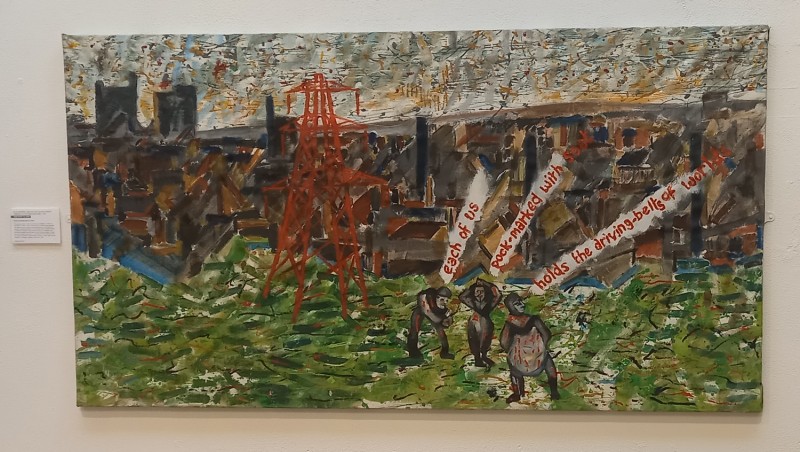 © the artist. Image credit: John Hyatt
© the artist. Image credit: John Hyatt
-
Shepherdess and Her Flock at a Pool Left by the Subsiding of the Overflow of the Nile
Frederick Goodall visited Egypt in 1858 and in 1870, observing and sketching the landscapes around the Pyramids, the streets of Cairo, and the local people. He later transformed his sketches into larger paintings. In 1990 this work was included in the exhibition 'The Sands of Time', which sought to question Western European perceptions of colonised countries. To support her exhibition, Jill Morgan cited Edward Said's book, Orientalism (1978) in which he argued that representations of the 'Orient' by European artists and writers created and upheld stereotyped and reductive views of North Africa and the Middle East.
Frederick Goodall (1822–1904)
Oil on canvas
H 36.5 x W 89.5 cm
Rochdale Arts & Heritage Service
-
Sphinx 1987
'Sphinx' was Maud Sulter’s first major photographic series, and her images depict the landscapes near Kunta Kinteh Island in the Gambia River, west Africa. In these works, Sulter explored the politics and histories embedded in the environment. Her seemingly peaceful, even beautiful vistas hold within them the traumatic and violent history of the transatlantic trade of enslaved African people. Reflecting on the 'Sphinx' series, artist Lubaina Himid wrote: 'the work asks us to remember, to speak out, to make. … These are not photographs of a place; pictures of trees, water, sky. These are portraits of a landscape. The scars are there, the life is there, the past, the future and the indecision of the present is there.'
Maud Sulter (1960–2008)
Gelatin silver print
H 51 x W 77 cm
Harris Museum, Art Gallery & Library
-
Interior c.1940
This work by Vanessa Bell was included in the exhibition 'Speaking in Tongues: Women Artists and Modernism, 1900–1935', curated by Jill Morgan at Rochdale Art Gallery, 12 March – 18 April 1990. Morgan wrote:
'The representation of interiors is a vital part of women's iconography within modernism; it is also traditionally devalued in the canon of art history. Vanessa Bell, Gwen John, Nina Hamnet, Leonora Carrington, Gluck, Frances Hodgkins all painted closely related interiors, often contracted around an open window, a view through into a garden beyond, an empty chair, a table with a vase of flowers, an open book. Highly restrained and controlled, these paintings use formal composition; the line of a chair on a wall, the shadow from a window, the placing of a vase or a book, to paint silences, through which colour cuts like a knife…'
Vanessa Bell (1879–1961)
Gouache on board
H 36.5 x W 44 cm
Rochdale Arts & Heritage Service
-
Still Life 1918
This work by Nina Hamnet was included in the exhibition 'Speaking in Tongues: Women Artists and Modernism, 1900–1935', curated by Jill Morgan at Rochdale Art Gallery, 12 March – 18 April 1990. Of this painting, Morgan wrote:
'In her "Still Life" … it is possible to analyse the psychologically loaded construction of an apparently simple bringing together of objects. The painting is small, confined, forcing the three main objects out to the edges of the canvas. There they simmer in a tense relationship to each other and to the real world on the edges of their reality.'
Nina Hamnett (1890–1956)
Oil on canvas
H 44 x W 34 cm
Blackburn Museum and Art Gallery
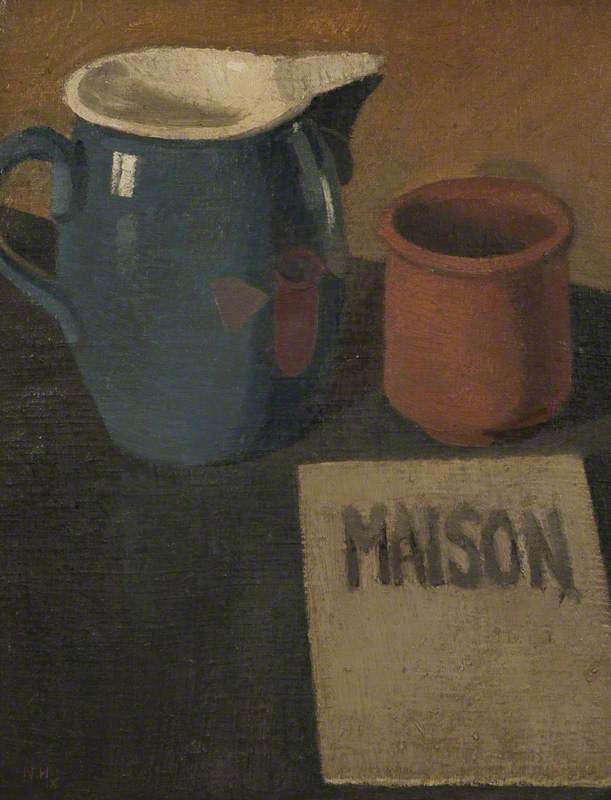 © the artist's estate / Bridgeman Images. Image credit: Blackburn Museum and Art Gallery
© the artist's estate / Bridgeman Images. Image credit: Blackburn Museum and Art Gallery
-
Chaque matin on se leve a un monde mois fertile (Each morning we wake to a less fertile world) 1986
'Chaque Matin On se Leve a un Monde moins Fertile' by Leslie Hakim-Dowek is one of a series of shrines or meditation boxes made by the artist in the late 1980s that are concerned with the gradual destruction of our natural environment. Hakim-Dowek was born and brought up in Lebanon, and has stated that her early work was largely determined by the violence of war that she experienced. But by the late 1980s, she was keen to move beyond those specificities to think more broadly about the loss and nature under threat. This work was included in the exhibition 'Along the Lines of Resistance', curated by Claire Slattery, Sarah Edge and Sutapa Biswas, and staged at Rochdale Art Gallery in 1989.
Leslie Hakim-Dowek (b.1960)
Encaustic on wood
H 365 x W 456 x D 130 cm
Rochdale Arts & Heritage Service
-
Gallery Three: Rochdale at the Heart of Everything
At Rochdale Art Gallery during the 1980s, exhibitions of work by local artists, or about local histories or communities often coincided with exhibitions by contemporary artists with national or international roots and reputations, making connections and encouraging conversations between them. At that time, the gallery also had strong links with local schools, community centres, women's groups and other community organisations, taking artists and artworks out into the community, and bringing the community into the gallery to take part in workshops, creative activities, talks and discussion groups. This section of 'A Tall Order' examined these local connections.
-
Certain Times 74 2022
Lubna Chowdhary grew up in Rochdale and this ceramic work, specially commissioned for this exhibition, reflects on and builds upon her childhood memories of the town. Having left their home in Tanzania in 1970, her family settled in Rochdale and established a business in the local textile trade. Chowdhary has recalled the contrasts between the brightly coloured fabrics and the industrial architecture that formed the backdrop to her childhood. The places and spaces of Rochdale, real and remembered, are rendered abstractly through arrangements of shape and colour to create a sensory experience. This commission was funded by Arts Council England.
Lubna Chowdhary
Ceramic
H 50 x W 144.4 cm
Rochdale Arts & Heritage Service
-
The Construction of College Bank Flats, Rochdale, Lancashire 1966
College Bank Flats, often referred to as 'The Seven Sisters', have been a Rochdale landmark since the 1960s. Six of the seven tower blocks housed a different full-height three-dimensional ceramic mural designed by tutors from Rochdale College of Art in its entrance. Only one now survives, in the most westerly block, Mitchell Hey. During the 1980s, several people associated with Rochdale Art Gallery lived in the blocks, including the Assistant Exhibitions Officer, Bev Bytheway, and the artist David Alker, who had his studio in his flat.
Charles Donald Taylor (1922–2005)
Oil on board
H 68.3 x W 99 cm
Rochdale Arts & Heritage Service
-
Shaw 1983
John Davies was born in County Durham and his early years were spent living in both coal mining and farming communities. He studied photography in Nottingham, graduating in 1974. He moved to Manchester in 1982, where he began documenting traces of the Industrial Revolution, to reveal its impact on the urban environment. His exhibition at Rochdale Art Gallery in 1986, 'In the Wake of King Cotton', involved a collaboration with the writer Rob Powell, in which they researched the local textile industry and the current state of its mill towns, producing a book published alongside the exhibition.
John Davies (b.1949)
Photograph
H 53.2 x W 63.5 cm
Rochdale Arts & Heritage Service
-
A Well-Earned Rest 1988
Derek Watson left school at 14 and served an apprenticeship in colour mixing and wallpaper printing at the Rochdale Wallpaper and Printing Company. Towards the end of his career he worked for Rochdale Council and became a technician at Rochdale Art Gallery. Inspired by the art and artists that he encountered, Watson decided to dedicate himself to painting, and in 1988 had a solo exhibition at the gallery titled 'Memories of Lancashire'. Following his death in 1992, the gallery staged a memorial exhibition of Watson's work, and Maud Sulter gave a lecture about his painting in his honour.
Derek Watson (1934–1992)
Oil on canvas
H 24.8 x W 29.2 cm
Rochdale Arts & Heritage Service
-
During the 1980s and early 1990s, Rochdale Art Gallery held an annual exhibition of work by local artists, craftspeople and makers. Every year, 'The People's Art' sought to show the richness and variety of artistic activity in the borough of Rochdale. In a similar spirit of community engagement, between July–September 2022, artist Harry Meadley staged 'Do What You Want: Free-For-All'. Following a public call-out to schools, community groups, artists and anyone interested in participating, 'Free-for-All' blossomed into a programme of family events, exhibitions, talks and performances all devised and run by the people of Rochdale. 'For A Tall Order!' curators Derek Horton and Alice Correia selected artworks exhibited in 'Free-For-All' that related to the themes and subjects addressed by artists during the 1980s.
'Free-For-All' installation image, 2022
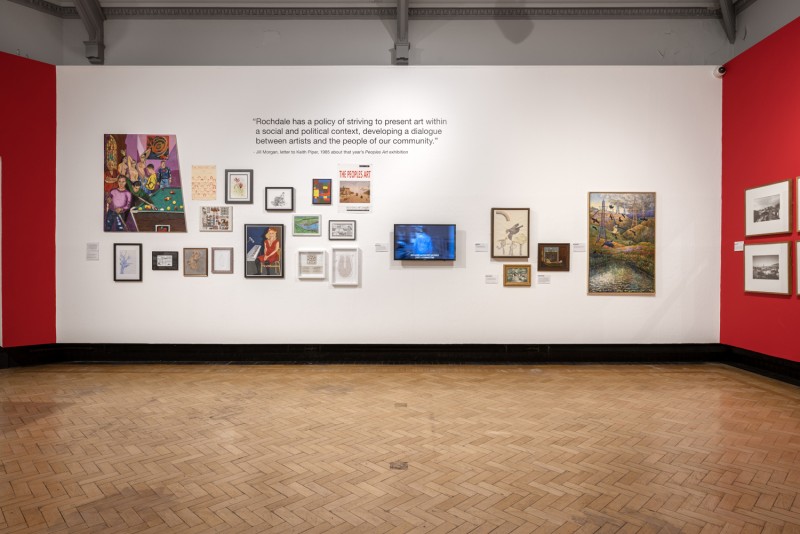 Image credit: Touchstones Rochdale
Image credit: Touchstones Rochdale
-
Gallery Four: Power, Identity and Representation
Jill Morgan and her team sought to make the gallery a place where both artists and audiences could engage with social and political issues. Many artists and exhibitions were concerned with depicting history and current events, and questioned the power relations that determine the society we live in. Exhibitions engaged with contemporary conflicts, youth sub-cultures and often conveyed a consciousness of class politics. Jill Morgan and her colleagues consistently supported women artists and curators, and many exhibitions were underpinned by feminist politics. Many of the key figures in what is now broadly known as the 'British Black Arts Movement' exhibited at Rochdale from the early 1980s onwards. Through these priorities, Rochdale Art Gallery created a space for women, working-class and Black artists to articulate their own experiences and identity.
-
Escape with Us into the Night 1982
At the heart of Stephen Willats' work is the belief that the potential for creative expression is inhibited by social structures. His solo exhibition, 'Means of Escape', opened at Rochdale in 1984 and included this work. Escape With Us Into The Night was made in collaboration with three young anarchists, Garry, Liz and Dave. The work represents their living environments, and the escape and cultural freedom they found in clubs at night, particularly The Anarchy Centre in London. Willats was interested in self-organised, countercultural pop-up clubs that were created around different communities of night dwellers, and the ways that the cover of night offered people the freedom and opportunity to express themselves as they wished.
Stephen Willats (b.1943)
Photographic prints, ink & acrylic
H 90 x W 140 cm
Rochdale Arts & Heritage Service
-
This painting by Glenys Johnson was included in the exhibition 'The Issue of Painting', staged at Rochdale Art Gallery in 1986. Johnson's paintings displayed in that show engaged with media images of conflict, whether in Lebanon, South Africa or Northern Ireland. Johnson was interested in the ways that the press and televisual media controlled and contextualised such images, and how our understanding of them might change when they are presented as a painting in an art gallery. Her layering of pigment and wax gives a slightly unfocused, allusive quality to the image which both distances the viewer from the violence depicted, while also highlighting how audiences can be numbed by mediated images of warfare.
'A Boy Points A Gun at a Passing Member of the Peacekeeping Force', 1984, oil on canvas by Glenys Johnson (b.1952)
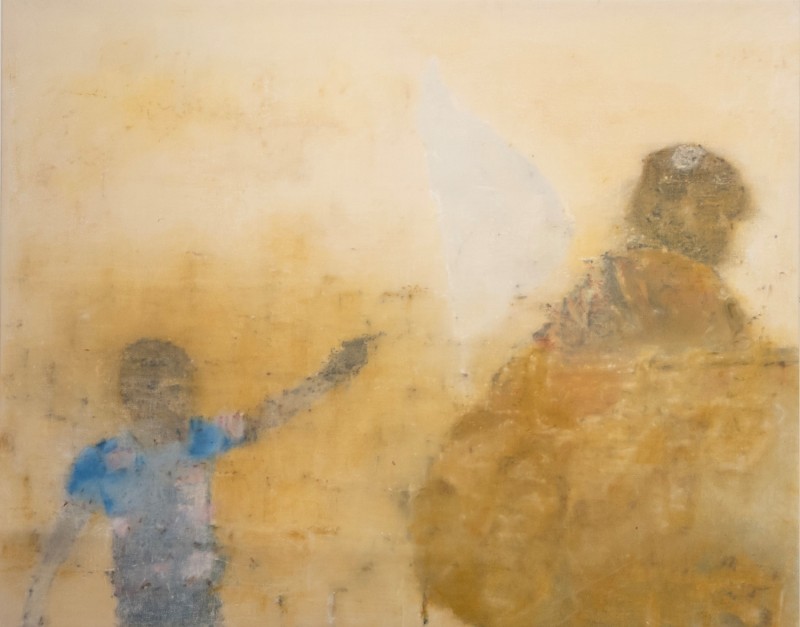 © the artist. Image credit: Glenys Johnson
© the artist. Image credit: Glenys Johnson
-
The Return of the 'Great White Whale' SS Canberra on Southampton Water on 11.07.1982 1985
The SS Canberra was an ocean liner that was requisitioned by the British government for use as a troop ship during the Falklands conflict, where it was also used to house prisoners of war. When the ship returned to Southampton it was greeted by a flotilla of little boats and huge crowds in a display of patriotism. David Alker's paintings explore the ways our perception of history is influenced by popular culture and media. He had a solo exhibition of paintings at Rochdale in 1982, and was also included in the 1988 group exhibition 'Depicting History for Today', in which this painting and its accompanying text panel were shown.
David Alker
Acrylic paint on paper with framed text panel
H 122 x W 152 cm
Rochdale Arts & Heritage Service
-
Head Rock Raven 1986
Maria Chevska's work was included in the exhibition 'Pandora's Box', staged at Rochdale Art Gallery in 1984. In the exhibition's catalogue she explained her view of art, stating: 'Visual art is a language in which to channel one's thoughts and feelings: one’s vision, through the necessary balance of formal structure and self-expression'. This painting is one of a series of works titled 'Voyage Out' shown at Bernard Jacobson Gallery, London in 1988. In 2022, Chevska explained that it engages with 'with autobiography, alivenesses, poetry, and the intimacy and fluid physicality of painting.'
Maria Chevska (b.1948)
Oil on canvas
H 61.5 x W 81.5 cm
Rochdale Arts & Heritage Service
-
Stepping into My Shoes 1991
Stepping Into My Shoes was included in Rachael Field's solo exhibition 'Real Lemon: Broadening Out', at Rochdale Art Gallery in 1991. The painting depicts two shoes, each belonging to the artist: on the left a small, pink buckle shoe, and on the right a larger and stouter, black lace-up. As onlookers we are challenged to think about the person who wore these shoes and consider what the style and colour of each signifies. Stereotypically girly and masculine: is it possible that these characteristics or traits belong to the same person? Are they social constructs that are enforced according to gender norms?
Rachael Field
Paint on canvas
Rochdale Arts & Heritage Service
-
The Young Rower 1932
In 1982, Jill Morgan included this painting in a display of works from Rochdale's permanent collection, titled 'Object Art/ Object d'Art'. The show sought to re-examine some of the most popular works owned by the gallery and question their meaning for contemporary audiences. In the exhibition's guide, Morgan noted that this painting by Lancelot Glasson 'caused a furore when it was shown at the Royal Academy in the 1930s and was a most adventurous and risque painting for those responsible to have bought for the gallery's collection'. However, she went on to note that by 1982, the voyeurism of the scene was regarded as 'obscene' to young feminists.
Lancelot Myles Glasson (1894–1959)
Oil on canvas
H 102 x W 76 cm
Rochdale Arts & Heritage Service
-
During the late 1980s and early 1990s, Bhajan Hunjan created a series of evocative self-portraits in which she investigated the multiplicities of personal identity via abstract and representational forms. In Peacock Feather, Hunjan counterbalanced her piercing gaze with a single peacock feather. These two parts of the painting are linked by an intricate lattice motif running across the top of the canvas. Hunjan's work was included in Maud Sulter's book, Passion: Discourses on Blackwomen's Creativity (1990), and documents in the Rochdale Art Gallery Archive reveal that in 1991 Jill Morgan had sought funding to stage a solo exhibition of Hunjan's work.
'Peacock Feather', 1990, acrylic on canvas by Bhajan Hunjan (b.1956)
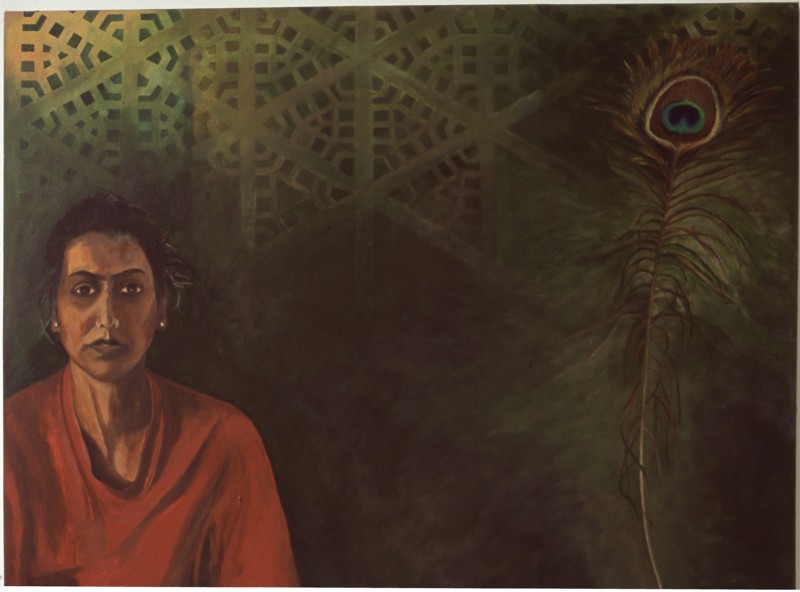 © the artist. Image credit: Bhajan Hunjan
© the artist. Image credit: Bhajan Hunjan
-
Saw Ohn Nyun IV 1932–1944
This painting by Gerald Festus Kelly is one of a series of works depicting Saw Ohn Nyun, Princess of Burma, that he created between 1932 and 1944. In 1982, this painting was included in the exhibition, 'Object Art / Object d'Art', which sought to re-consider some of the most popular works in Rochdale Art Gallery's permanent collection. In the exhibition guide, Jill Morgan described how the pastel colours and demure pose of the sitter suggested that this was a 'deliberately attractive and decorative picture'. Today we can regard this painting as an example of how British colonial attitudes stereotyped East Asian femininity as passive and exotic, implicitly suggesting that East Asian women were simply decorative.
Gerald Festus Kelly (1879–1972)
Oil on canvas
H 106.5 x W 73 cm
Rochdale Arts & Heritage Service
-
Through a series of uncompromising self-portraits, during the mid-late 1980s, Lesley Sanderson addressed the intersectionality of race and gender, and the derogatory racist stereotypes that cast East Asian women as passive and sexually available. This painting, Time for Change, was included in the exhibition, 'Along the Lines of Resistance: an exhibition of contemporary feminist art in 1989', and presents Sanderson naked and staring out at the audience. Behind her is an exoticised depiction of Saw Ohn Nyun, Princess of Burma, created in the 1930s by the then-celebrated painter Gerald Festus Kelly.
'Time for a Change', 1988, oil on canvas by Lesley Sanderson (b.1962)
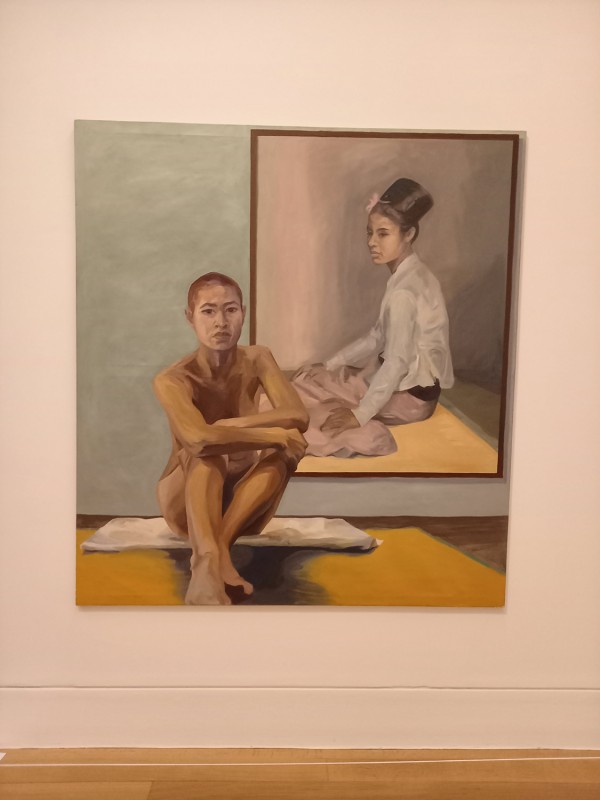 © the artist. Image credit: Lesley Sanderson
© the artist. Image credit: Lesley Sanderson
-
First exhibited at the gallery Camerawork, London, in 1991, Cataract was a large-scale slide projection of overlapping photographic images each showing segmented parts of four different male faces. In this work, Donald Rodney explored the visual strangeness of police photo-fit images and the distortions that take place in the public representation of black male bodies. Significantly, Cataract was a continuation of the ideas that Rodney had explored in his exhibition at Rochdale Art Gallery titled 'Critical', in 1990. This digital restaging of Cataract was specially commissioned for 'A Tall Order!' and was made possible with funds from Arts Council England.
'Cataract', 1990/2023, digital film of slide tape projection by Donald Rodney (1961–1998)
 © the artist. Image credit: Donald Rodney
© the artist. Image credit: Donald Rodney
-
'A Tall Order! Rochdale Art Gallery in the 1980s' was co-curated by Alice Correia and Derek Horton. The artworks gathered here are only a selection of the works by 71 artists presented in the show. In assembling the exhibition, and this digital record of it, what was, and remains striking, is how many artworks – including those by Rita Keegan, Juginder Lamba, Keith Piper, Ingrid Pollard, Veronica Slater, and Ann Tallentire – were borrowed directly from the artists or private collections. If the selection presented here seems partial, or does not seem to fully reflect the exhibition's stated aims, this is because it mainly includes works held in public collections. An unexpected outcome of the show was, then, a query into why public collections hold so few works by artists who were challenging the status quo, and asserting class, gender and racial politics during the 1980s.
-
'A Tall Order! Rochdale Art Gallery in the 1980s' on the Your Trust website (yourtrustrochdale.co.uk)
https://www.yourtrustrochdale.co.uk/exhibitions/a-tall-order-rochdale-art-gallery-in-the-1980s/
Exhibition brochure
https://issuu.com/link4lifetrust/docs/atallorder_20pbrochure_105x297mm_digital
Explore artists in this Curation
View all 21-
 Stephen Willats (b.1943)
Stephen Willats (b.1943) -
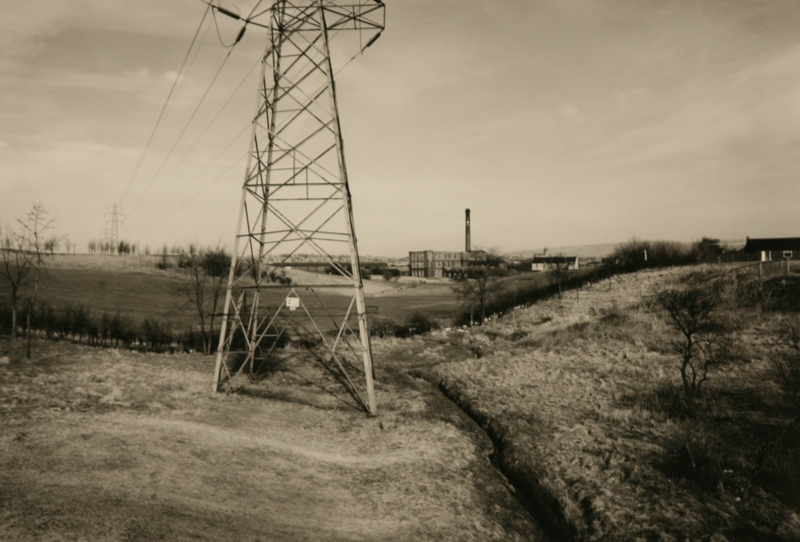 John Davies (b.1949)
John Davies (b.1949) -
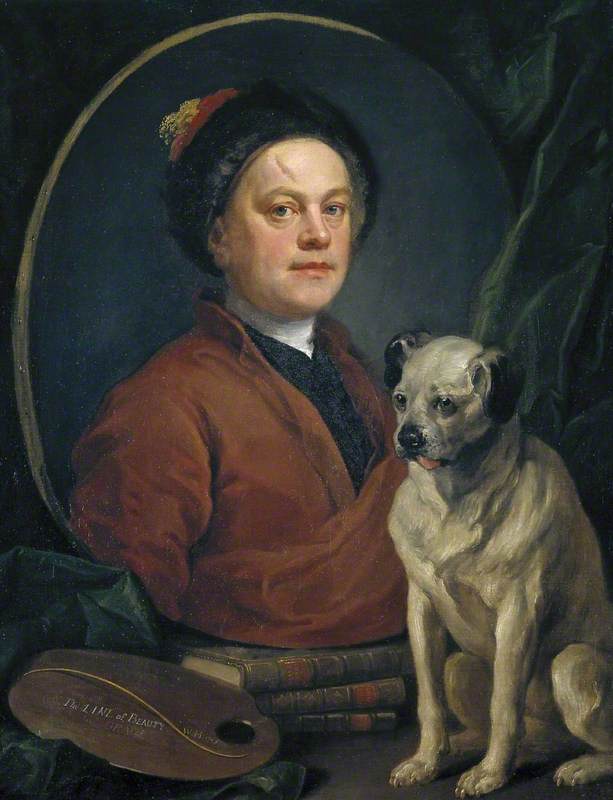 William Hogarth (1697–1764)
William Hogarth (1697–1764) -
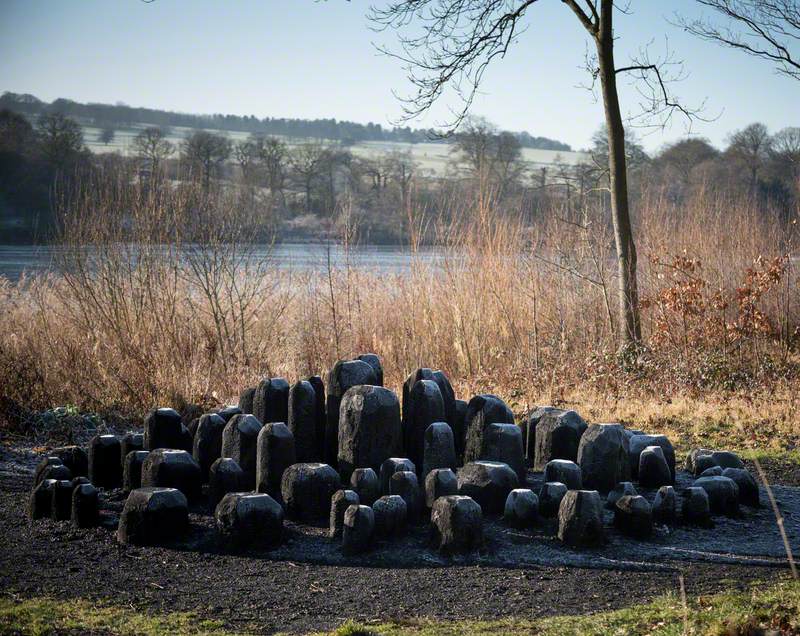 David Nash (b.1945)
David Nash (b.1945) -
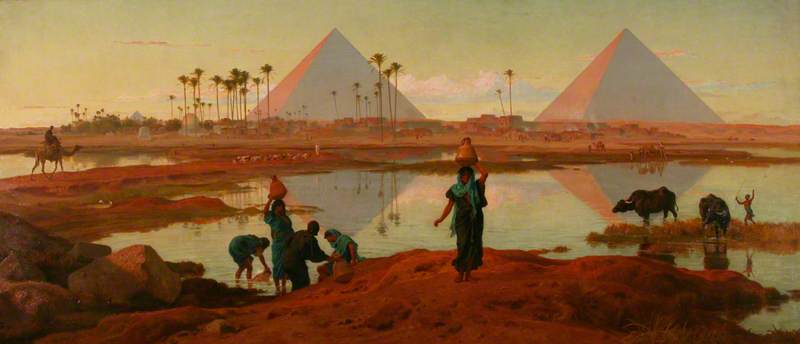 Frederick Goodall (1822–1904)
Frederick Goodall (1822–1904) -
 Lois Williams (b.1953)
Lois Williams (b.1953) -
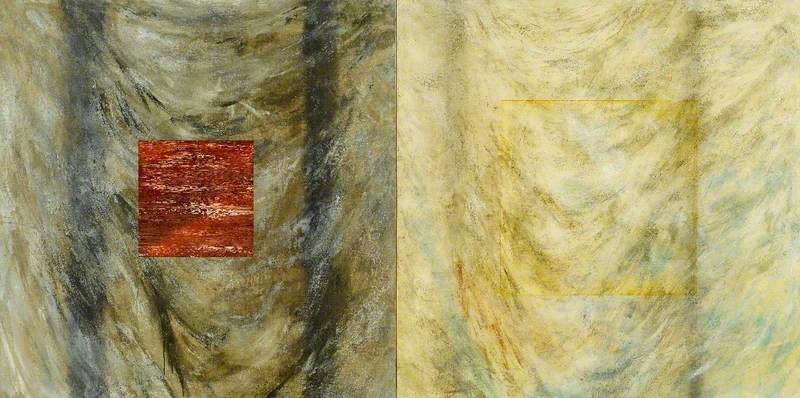 Maria Chevska (b.1948)
Maria Chevska (b.1948) -
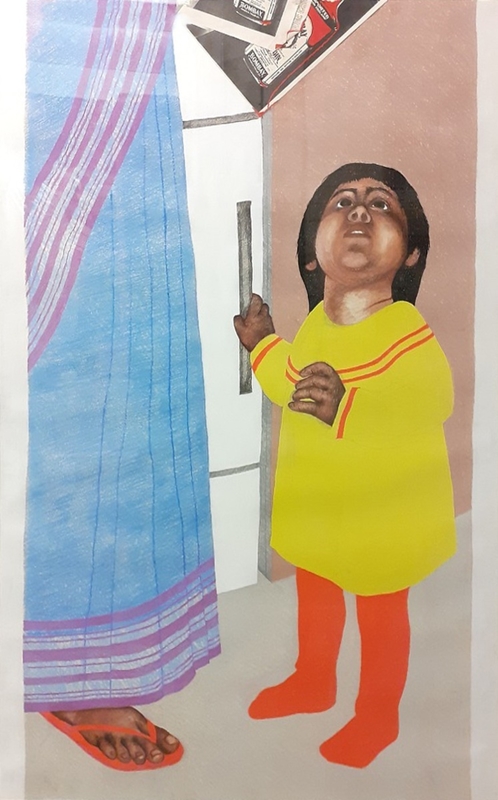 Sutapa Biswas (b.1962)
Sutapa Biswas (b.1962) -
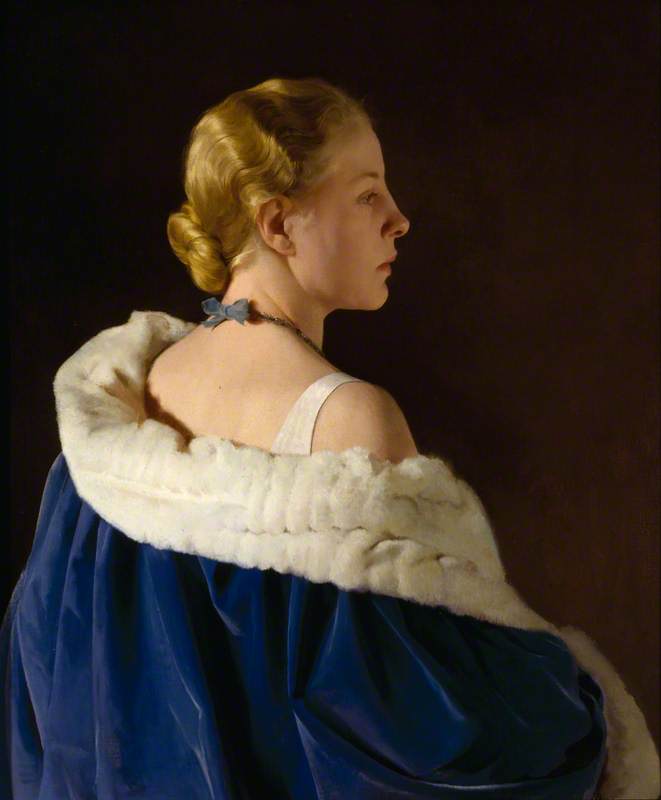 Gerald Festus Kelly (1879–1972)
Gerald Festus Kelly (1879–1972) -
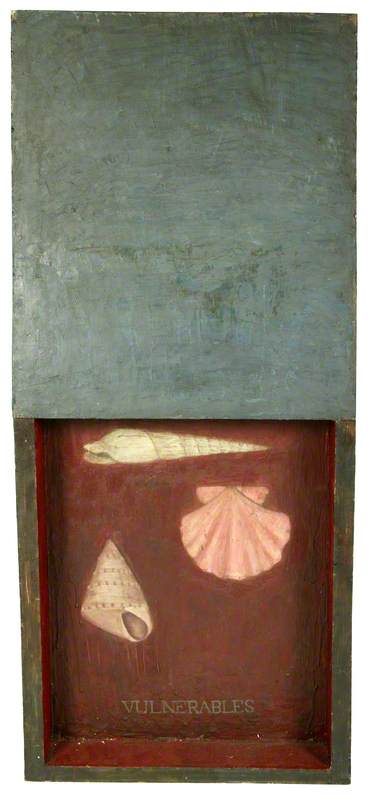 Leslie Hakim-Dowek (b.1960)
Leslie Hakim-Dowek (b.1960) - View all 21
